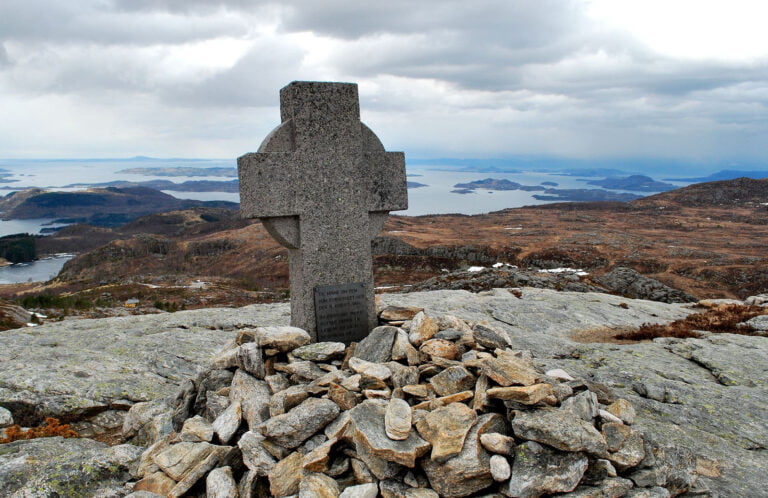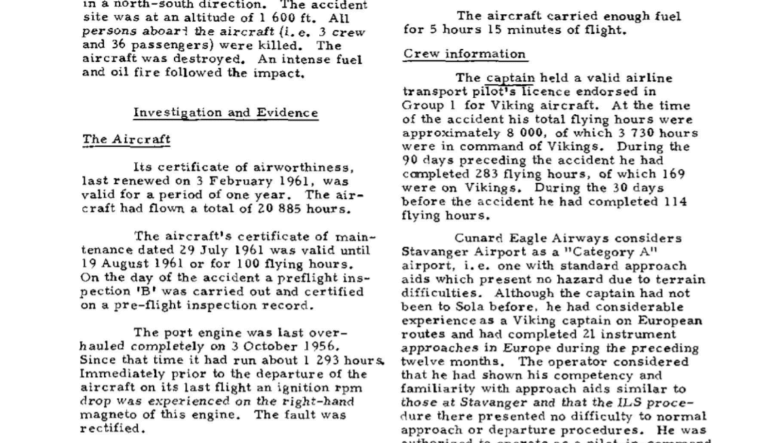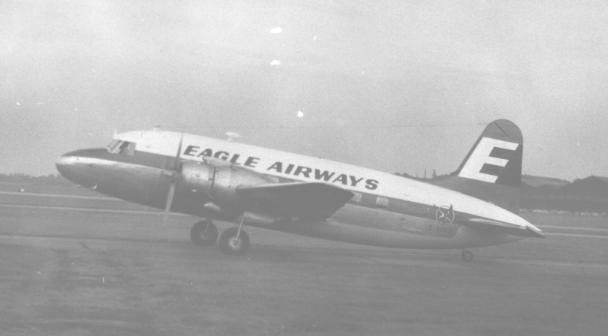They were teenagers on the trip of their lives. They would never return. This is the story of the Holtaheia air accident.
We take a look back at the tragic 1961 Holtaheia Vickers Viking crash, which killed all 39 people on board. 34 of the victims were young boys from a South London school.

The crash of the charter plane remains one of Norway's worst air accidents.
A school camping trip
The passengers aboard the doomed Vickers Viking were 34 boys between the ages of 13 and 16, and two teachers from Lanfranc Secondary, in Croydon. Three crew members were also onboard.
The Vickers Viking was a twin-engine propeller plane operated by Eagle Airways. It had been chartered by the school to fly from London Heathrow to Stavanger. For many of the pupils, it was their first time travelling by air, and visiting another country.
Read more: The Torghatten Air Accident of 1988
At the time, it was the worst air disaster ever to have happened in Norway. It was also, understandably, a traumatic event for the Croydon community.
The mysterious circumstances of the disaster
The inquest following the accident never established with any certainty the causes of the disaster. According to the final report, the cause of this accident was a deviation from the prescribed flight path for reasons unknown.
The technical term for this type of accident is “controlled flight into terrain”. Essentially, it means that the crew was in full control of the aircraft until the last second, but that they flew into the terrain (in this case, Holtaheia mountain), presumably because they were unaware of their exact location at the time.
Read more: The 2004 Rocknes Ship Disaster
On 28 May, 1962, the Royal Norwegian Commission for the Investigation of Civil Aircraft Accidents issued its report. The report was also released by the Ministry of Aviation (UK) on the same day.
Here's a snippet from the report:

The investigation found no irregularities with regards to the crew’s experience or the amount of rest they had before the flight. The plane itself was in good order, with a valid certificate of maintenance, a load well under the maximum allowed and more than enough fuel to make the journey.
Weatherwise, a low-pressure system was in the area on that day, but no storms or sudden changes in cloud cover or air pressure were reported.
The wind was blowing at about 60 knots at the altitude of the crash, but the wind speed was well within the margins of what the crew would have been informed of by the weather reports before and during the flight.
In other words, they had the necessary information to make allowances for the high winds, and not stray too far from their predetermined route.
Assuming that drift due to high winds is the cause of the crash, the crew would have had a period of 4 to 5 minutes during which their instruments would have made it clear to them that they had deviated from their course.
Read more: The 1996 Vnukovo Airlines Crash on Svalbard
Whether the instruments malfunctioned, were ignored or were misread is unknown, according to the report.
Further reading about the Holtaheia crash
If you want to learn more about the crash, a good place to start is to read the two books written by Rosalind Jones, the sister of one of the victims. Her brother, Quentin Green, was 13 when the toss of a coin got him the last seat on the doomed plane.

His father, Ronald, died of a heart attack four months after the accident, tormented by guilt for letting his son go on the trip.
Rosalind’s first book is titled The Lafranc Boys (Filament Publishing) and was published in 2011. The second one, The Papa Mike Air Crash Mystery (Craigmore Publications), was published in 2017.
You can also read about this and other air disasters in our article about Norway’s deadliest air accidents.
Visiting the Holtaheia crash site
A monument has been erected on top of mount Holtaheia to commemorate the disaster. It is easily accessible via a well-marked path, open from May to October.
A plaque also indicates the exact location of the crash, about 9 metres below the summit. From the parking lot, the path to the monument is 0.8km long (half a mile). The round trip takes about one hour.
Some people still visit on the anniversary of the crash to pay their respects to those who died there. “Going there is not a frightening experience. I’ve found going there pleasant and relaxing and very therapeutic just to sit quietly, and look, and think,” said a relative of one of the young victims.

